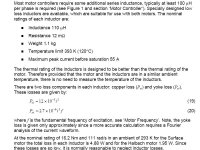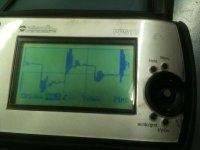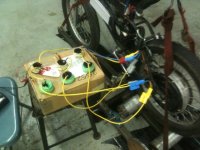Measuring the voltage across the inductor is not a very good way to do this, even for a "is it enough" measurement. If the motor inductance is really low, the external inductor voltage will go to zero when the motor current levels out. However, If there is enough inductance, the voltage across the inductor will also be fairly low because the current isn't changing very fast.
You really need a purely resistive element to measure current across, or a hall-effect "clamp" probe. Otherwise you can't separate the V=IR voltage from the V=L*dI/dt voltage. A straight, non-coiled length of wire would probably be sufficient if your scope is sensitive enough to measure the voltage.
If you want to get an accurate measurement of the inductance value, you need to measure the current at two points during the transient. One point close to the PWM edge and the second point after it's at least 50% is best. Those two values and the delta-T between them will let you calculate the time constant. Just measuring the time to decay to approximately zero is not sufficient to get any kind of accuracy. It's not a difficult measurement to do, it just needs to be done properly to get an accurate result. Look up "RL Circuit" on Wikipedia for the equations and such.




